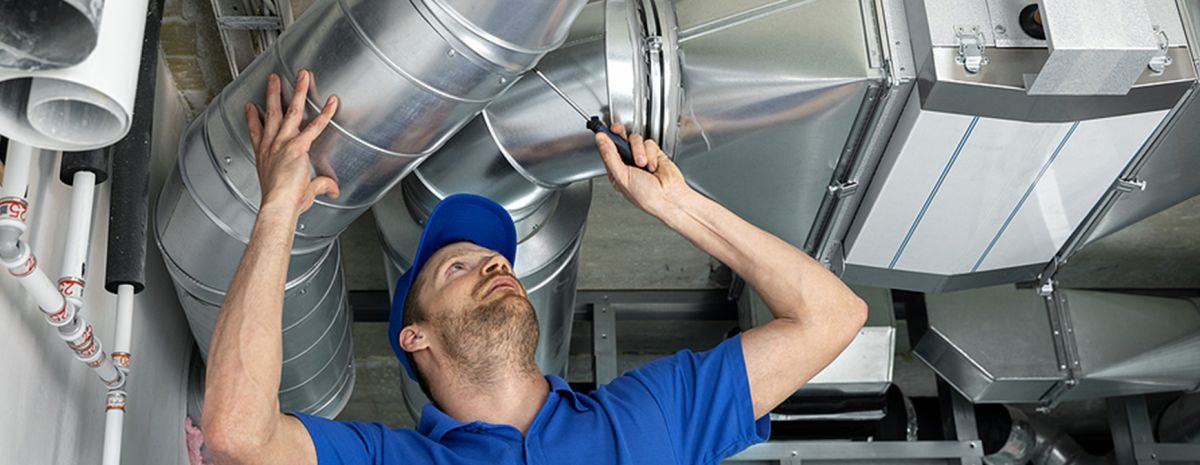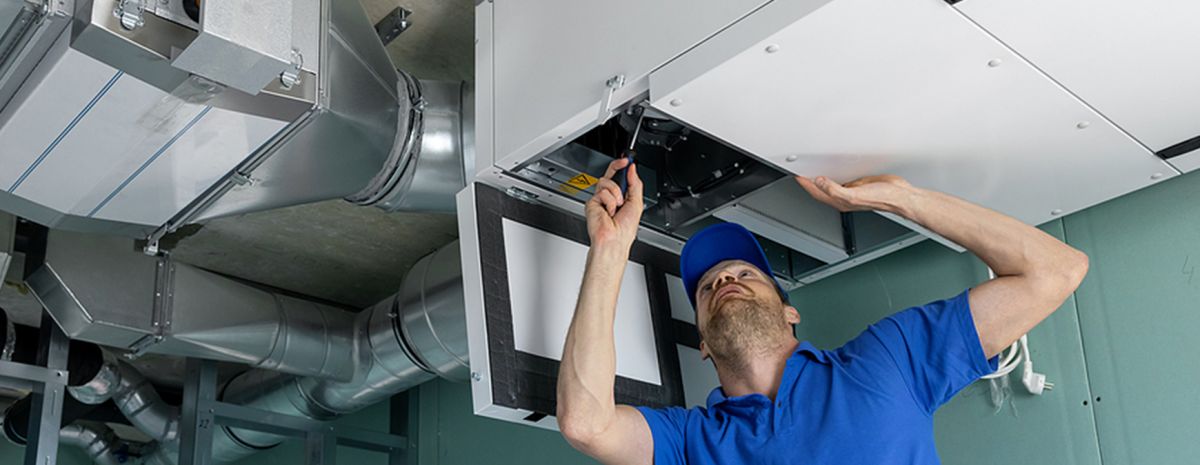
In the field of HVAC service and repair, a duct is a tube, pipe or channel through which air flows. The duct may be made of metal of synthetic materials. Homes and businesses with heating, cooling and ventilation equipment may have a network of ducts to transport the conditioned air from the equipment to the rest of the building. This system of ducts is called “ductwork.”
While you’ll likely learn more about ductwork in your HVAC classes, this article can serve as an introductory overview to get started on the subject.
How Ductwork Works
Similar to how arteries transport blood in the human body, ductwork conveys air throughout the home. What kind of air? Conditioned air from the HVAC system to the various rooms of the home and used air from those rooms back to the unit to be heated or cooled again.
Let’s take a closer look at the process, starting with the specific parts that make up HVAC ductwork and their role in how it works.
Anatomy of HVAC Ductwork and How It Works
Step 1: Duct Trunk
Larger than duct pipes, the duct trunk is the main passageway for air from the heating or cooling unit. Air is conditioned in the unit and then travels through the duct trunk to the duct pipes.
Step 2: Duct Pipes
These are smaller pipes that branch out from the duct trunk to the various rooms of the home or building. Conditioned air travels through the duct pipes to the supply registers located throughout the structure.
Step 3: Supply Registers
Duct pipes terminate at the supply registers, or vents, that blow the conditioned air into the rooms of the building.
Step 4: Return Registers
At the same time that supply registers blow conditioned air into the room, return registers pull used air in the room to the return plenum.
Step 5: Return Plenum
The return plenum is a large box housing used air before it is heated or cooled in the HVAC unit. Many systems also have a supply plenum to store conditioned air before it is distributed throughout the home via the supply registers.
Step 6: Air Handler
Used air travels from the return plenum to the air handler. This component typically holds the blower fan and the air filter. As its name suggests, the blower fan pushes the air through the ductwork. Air filters in an HVAC system clean the used air, removing dust and debris and preventing it from clogging up the air handler and ducts.
The clean air is then sent back up the duct trunk to the HVAC unit to be conditioned again. This cycle continuously repeats, ensuring a comfortable indoor temperature for the building occupants.
Alternate Step 6: Flue
HVAC systems that create toxic fumes during the process of heating or cooling indoor air may have a flue instead of an air filter. In such systems, the used air is funneled outside instead of being cleaned in the air filter and reused.
Get Started on the Path to a New Career
Fill out our form to learn how we can help you change your life.
Why Is Ductwork Important?

HVAC ductwork is important for two reasons. In homes or buildings that have a central air conditioning and heating system, ductwork distributes the conditioned air from the HVAC unit to the rest of structure.
This network of ducts can also play an important role in promoting healthy indoor air quality. This is because some HVAC systems produce a small amount of toxic carbon monoxide. It is the job of the ductwork to vent this harmful gas to the outside of the home.
What Are Common HVAC Ductwork Services?
Now you know what ductwork is, but how might you work on it once you become an HVAC technician?
There are many types of services you could perform on HVAC ductwork. Below are 3 common ones:
1. Ductwork Insulation
Ductwork insulation is when an HVAC technician wraps the ducts with insulating material to prevent heat loss or gain in the conditioned air traveling through them.
2. Ductwork Cleaning
Even though the HVAC system usually has an air filter, dirt, dust and airborne allergens may still build up in the ductwork. This can diminish the indoor air quality because these pollutants may be blown into the home along with the conditioned air. Routine ductwork cleaning can help prevent such problems.
3. Sealing Ductwork
Holes or cracks, even tiny ones, can allow conditioned air to escape the ductwork before reaching the rooms to be cooled or heated. Sealing ductwork by plugging up these cracks and holes can help prevent this loss of conditioned air.
Environmentally Friendly Ductwork
You may have noticed the HVAC industry adopting more green technologies lately, and it’s easy to see why: these innovations can boost energy efficiency and promote a cleaner environment for future generations.
Ductwork is no exception. Along with traditional forms, it’s also possible now to find green ductwork. Just another testament to how forward-looking the industry you’re training to be a part of can be.
This blog has been labeled as archived as it may no longer contain the most up-to-date data. For a list of all current blog posts, please visit our blog homepage at https://www.rsi.edu/blog/

